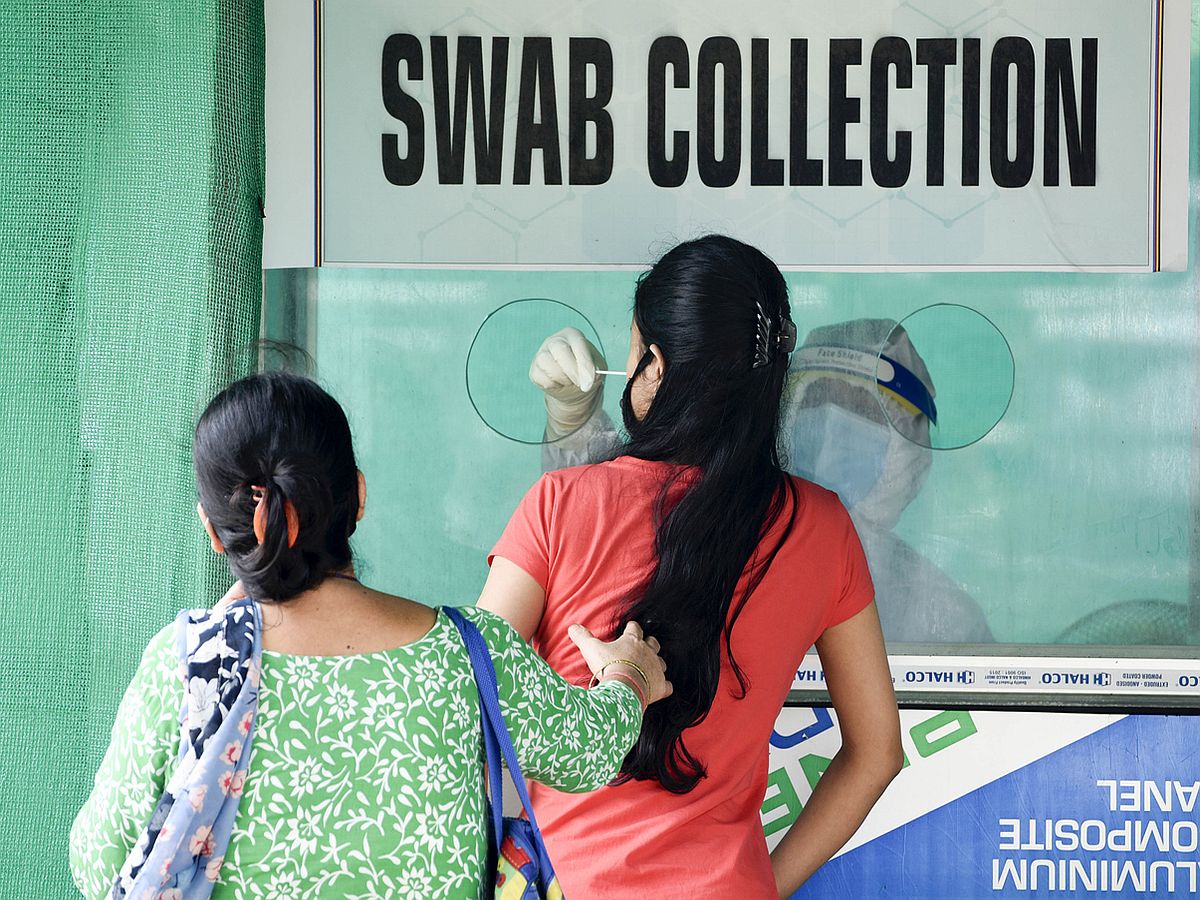Raj Bhaban rejects media reports, clarifies on bust at Raj Bhavan
Raj Bhaban has also formed a two-member panel to probe the details of reports carried in some media.
According to experts in Siliguri, the new triple mutant variant, which is being called the Bengal variant, may lead to a more rapid disease transmission in the coming weeks, especially among young people below the age of 50 in the state, which is currently witnessing Assembly elections.

(Photo: iStock)
Even as West Bengal continues to reel under the unprecedented second wave of Covid-19 along with the rest of the country, the detection of a new triple mutant strain here has posed a fresh challenge in the battle against the deadly virus in the state.
According to experts in Siliguri, the new triple mutant variant, which is being called the Bengal variant, may lead to a more rapid disease transmission in the coming weeks, especially among young people below the age of 50 in the state, which is currently witnessing Assembly elections.
A senior professor of the Department of Biotechnology, University of North Bengal, Dr Ranadhir Chakraborty, who was part of an international team which mapped a total of 7,170 genomes of the coronavirus till August 2020, said that the new variant was far more transmissible than the original one as its spike proteins had more binding power to attack and infect human cells.
Advertisement
“In the Bengal variant, which is being scientifically referred to as the B.1.617 variant, two deletions and three mutations have taken place. Tyrosine and Hystedine, which are the 145th and 146th amino acids respectively in the coronavirus spike protein, have got deleted, while two mutations, namely E484K and V382L have taken place in the receptor binding domain of the protein and another mutation, namely D614G, is evident in the fusion peptide domain of the protein. In E484K, Glutamic has changed into Lysine and in V382L, Valine has changed into Leucin. Aspartic has changed into Glycine in D614G,” he said.
As a result of these changes, Dr Chakraborty said the infectivity of the virus had increased manifold, especially among the young people in Bengal as in other parts of the country. “The shift in infection to lower agegroups has been mainly because of the increased binding between the spike protein and the angiotensinconverting enzyme 2, or ACE2 “receptors,” present in the human organs.
The binding efficiency has increased significantly due to the mutations taking place in the RBD. The disease is spreading more among children and young people because of the higher presence of ACE-2 among children and people aged between 24 and 50. The ACE-2 is providing the entry point for the coronavirus to hook into and infect a wide range of human cells, especially those among the children and young people, which is why the second wave is proving to proving to be more virulent,” he said.
The other reason for the rapid spread of the disease this time, Dr Chakraborty said, was the injectile property of the fusion peptide domain. “As a result of the high injectile capacity of the FPD, the virus is now able to enter into the human cell much easily and much faster, which is why the disease is spiraling out of control every hour,” he said. The veteran microbiologist cautioned that B.1.617 was the most infectious strain so far as it had enhanced viral replication.
“The variant is far more transmissible than the original one as its spike proteins have more binding power to attack and infect human cells. Though the strain is referred to as the triple mutant variant, we should not use terms like double or triple mutants as many mutations are taking place at various sites of the protein constantly. They are misnomers and rather we should use the term lineage,” he said.
Dr Chakraborty also pointed out that the interpretations of the deletions of Tyrosine and Hystedine were still not available. “The genome sequencing of the deleted proteins might give us more alarming information about the new variant,” said the senior professor,” who felt that the case fatality rate of the disease may increase sharply and suddenly in the later stages of the second wave or during the third wave of the disease in the coming months.
Advertisement